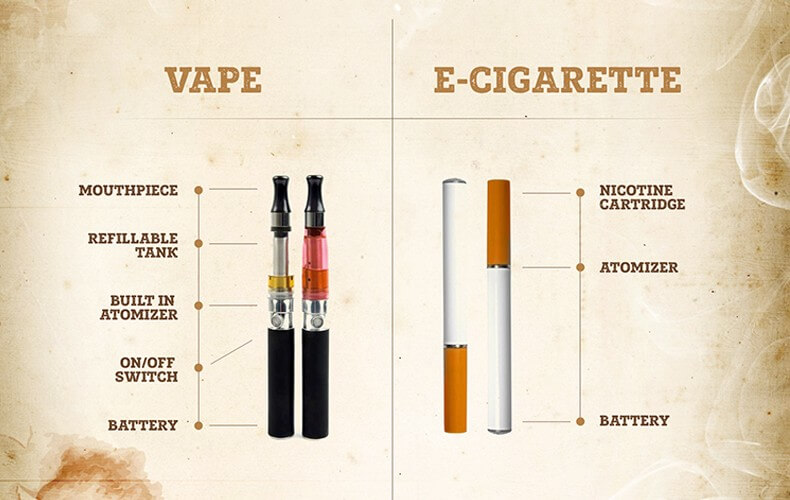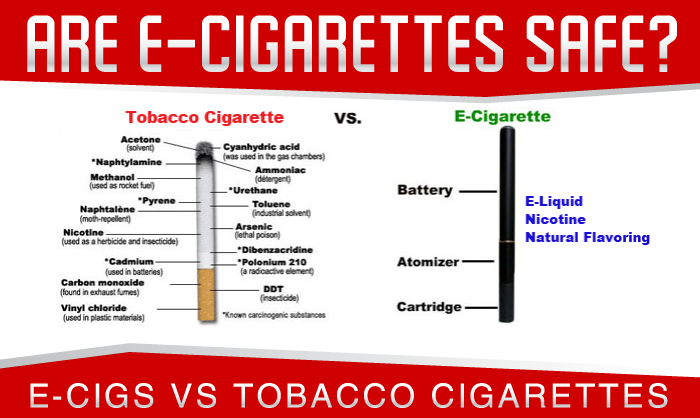

Welcome to Our Comprehensive Guide on E-Cigarettes vs. Traditional Smoking
As the debate over E-Cigarettes and traditional smoking intensifies, understanding the nuances of both options is crucial. In our comprehensive comparison, we explore whether E-Cigarettes present a safer alternative to cigarettes. Discover key insights on the vaping debate and whether E-Cigarettes truly help smokers quit.
Unveil the truth about health risks associated with E-Cigarettes and how they stack up against traditional smoking. Learn about the shift in smoking trends and if E-Cigarettes are genuinely changing the game. Delve into nicotine delivery differences between E-Cigarettes and traditional cigarettes, and gain knowledge on their impact on lung health and long-term risks.
Find out if E-Cigarettes offer a cost-effective smoking solution and how public perception views them compared to traditional cigarettes. As the future of smoking evolves, we question whether E-Cigarettes will overtake traditional cigarettes and what this could mean for smokers. Evaluating the harm, research, and economic factors, we analyze whether E-Cigarettes are a step towards quitting or a gateway to smoking.
In our exploration of the pros and cons, we offer insights on the safety of E-Cigarettes as an alternative and what smokers should consider before making the switch. Through an in-depth examination of health perspectives, we assess if E-Cigarettes can indeed reduce smoking-related risks. Finally, dive into the critical debate over their health impacts; is vaping truly better for your health?
Join us as we break down myths, deliver the facts, and provide a balanced overview of Traditional Smoking vs. Vaping, ensuring you make an informed choice. Explore our resources to understand if E-Cigarettes might be a better option for you.

The Vaping Debate: Are E-Cigarettes a Safer Alternative to Cigarettes?
Potential health risks of e-cigarettes
As the popularity of e-cigarettes continues to rise, it's crucial to address the potential health risks associated with vaping. Many proponents tout e-cigarettes as a safer alternative to traditional cigarettes, but emerging research indicates that they are not without their dangers.
For instance, while e-cigarette users may avoid some of the well-known health risks linked to traditional smoking—such as cancer and heart disease—they might still face issues like:
- Respiratory problems: Vaping has been associated with lung inflammation and increased risk of respiratory issues, as shown in various studies highlighting cases of "vaping-related lung injury."
- Nicotine addiction: Many e-cigarettes contain high levels of nicotine, which can lead to addiction and complicate quitting methods.
- Exposure to harmful substances: Certain flavorings and chemicals present in e-liquids have been found to potentially harm the lungs.
Comparison of harmful chemicals in e-cigarettes and traditional cigarettes
Drawing a direct comparison between the harmful chemicals found in e-cigarettes and traditional cigarettes sheds light on the complexities of the vaping debate. Traditional cigarettes contain thousands of harmful substances, including:
- Tar: A sticky substance that can lead to lung cancer and other serious respiratory issues.
- Carbon monoxide: A deadly gas that impairs oxygen delivery in the body.
- Formaldehyde: A known carcinogen linked to various cancers.
On the other hand, e-cigarettes often contain fewer harmful substances, but they still incorporate chemicals that can be dangerous:
- Propylene glycol and vegetable glycerin: Common base ingredients that can cause irritation when inhaled.
- Acrolein: A compound that can lead to lung damage and is present in some e-cigarette products.
Understanding these chemical profiles emphasizes the need for careful consideration when weighing whether e-cigarettes are indeed a safer alternative to traditional smoking. While they may pose fewer risks, the absence of long-term research means that the full scope of their impact remains unknown. As individuals navigate the tricky waters of vaping versus smoking, they should remain aware of these potential health risks and consider their personal health goals in the decision-making process.
Breaking Down the Myths: Do E-Cigarettes Really Help Smokers Quit?
Effectiveness of e-cigarettes for smoking cessation
As the debate over vaping continues, one of the most pressing questions is whether e-cigarettes can effectively assist smokers in quitting. Many smokers have turned to vaping as a potential solution, believing it can help them transition away from traditional cigarettes. Research indicates that there are mixed outcomes regarding the effectiveness of e-cigarettes for smoking cessation.
Here are some key points to consider:
- Reduction in smoking frequency: Many users report that by switching to e-cigarettes, they've been able to cut down on their cigarette consumption, which is a positive step toward quitting.
- Nicotine replacement: E-cigarettes can serve as a form of nicotine replacement therapy, offering a way to manage cravings without the harmful tar and toxins found in tobacco.
However, the effectiveness can vary widely among individuals, and some studies show that while e-cigarettes may facilitate quitting for some, they may not be effective for everyone.
Controversies surrounding e-cigarettes as a quitting aid
Despite the potential for e-cigarettes to aid smoking cessation, controversies abound. Critics argue that promoting e-cigarettes as a quitting tool may inadvertently encourage continued nicotine dependence. Some of the key concerns include:
- Gateway effect: Many fear that e-cigarettes may lead non-smokers, particularly the youth, to start using nicotine, potentially leading them to traditional cigarettes later on.
- Long-term health implications: With limited research on the long-term effects of vaping, some health experts caution against recommending e-cigarettes as a safe alternative for quitting.
In essence, while e-cigarettes might provide a pathway to reduce or eliminate traditional smoking, the evidence is still evolving. Smokers contemplating this route should weigh the existing research and consider their own health goals and circumstances. Understanding these nuances can empower individuals to make more informed choices on their journey to quit smoking.
Health Risks of E-Cigarettes: How Do They Compare to Traditional Smoking?
Severe health risks of traditional smoking
When we delve into the health risks associated with smoking, the statistics are nothing short of alarming. Traditional smoking is directly linked to a wide array of severe health issues, which is why many are drawn to the idea of e-cigarettes as a potential alternative. Here are some of the grave health risks posed by traditional cigarettes:
- Cancer: Cigarette smoke contains hundreds of carcinogens, leading to various cancers, including lung, throat, and mouth cancers.
- Cardiovascular diseases: Smoking increases the risk of heart attacks, strokes, and other serious heart conditions due to the damage it causes to blood vessels.
- Chronic obstructive pulmonary disease (COPD): This progressive lung disease can severely impair quality of life and is primarily caused by long-term smoking.
In contrast, e-cigarettes present a different set of challenges, albeit with fewer established dangers compared to traditional cigarettes.
Risks associated with nicotine and other chemicals in e-cigarettes
E-cigarettes may be marketed as a safer option, but they aren't without their own set of risks. Some key issues associated with e-cigarettes include:
- Nicotine addiction: Many e-liquids contain high concentrations of nicotine, which can lead to dependency resembling that of traditional smokers and may complicate efforts to quit.
- Toxic additives: While e-cigarettes do not contain the same level of carcinogens, they can include harmful chemicals like:
- Formaldehyde: A potential carcinogen that can be released in aerosol form.
- Acrolein: Known for its irritant properties, commonly linked to lung damage.
Ultimately, while e-cigarettes might appear to pose fewer immediate risks than traditional smoking, the long-term health effects remain poorly understood. Personal experiences among former smokers switching to vaping often vary, highlighting the need for cautious consideration. As individuals weigh their options, it’s vital to understand these health risks fully, ensuring informed choices are made in pursuit of better health.
The Shift in Smoking Trends: Are E-Cigarettes Changing the Game?
Appeal of e-cigarettes to younger populations
As e-cigarettes gain popularity, it's hard to ignore their strong appeal among younger demographics. Many teenagers and young adults are drawn to vaping for various reasons, which has sparked a significant shift in smoking trends.
Here are some factors contributing to this allure:
- Flavor variety: E-liquids come in countless flavors—ranging from fruity to dessert-inspired—which attract a younger audience looking for a more interesting alternative to traditional tobacco.
- Perception of safety: Many young individuals mistakenly believe that e-cigarettes are harmless, viewing them as a trendy, less harmful option compared to conventional cigarettes.
- Social influence: Vaping is often depicted in social settings and media as a cool habit, leading to peer pressure and normalization among youth.
Unfortunately, this shift raises questions about the long-term impact of vaping trends.
Long-term implications of vaping trends
While the immediate appeal of e-cigarettes may seem innocuous, the long-term implications are concerning. The potential outcomes of these shifting trends could include:
- Nicotine addiction among youth: A new generation may develop a dependence on nicotine, leading to future smoking habits or reliance on e-cigarettes as a long-term habit.
- Gateway to traditional smoking: Empirical evidence suggests that adolescents who start with e-cigarettes might transition to traditional cigarettes, negating any perceived benefits of vaping.
- Health ramifications: As vaping becomes more normalized, unstudied long-term health effects could seep into the population, ultimately creating a new set of health challenges.
In light of these implications, it's crucial for society to address the rising trend of e-cigarettes, especially among youth. Understanding both the appeal and potential risks can empower individuals and communities to make more informed choices regarding their health and the future of smoking. As we examine these shifting trends, it becomes clear that proactive measures are essential in guiding healthier behaviors across all age groups.
Nicotine Delivery: E-Cigarettes vs. Traditional Cigarettes—What You Need to Know
Control of nicotine intake in e-cigarettes
One of the appealing aspects of e-cigarettes is the ability to control nicotine intake more precisely compared to traditional cigarettes. Many vapers appreciate the flexibility that e-cigarettes provide when adjusting their nicotine consumption. Users can choose e-liquids with varying nicotine concentrations, making it easy to tailor their vaping experience. Here are a few noteworthy points:
- Different nicotine levels available: E-liquids can come in strengths that range from high levels (24mg/ml and up) to zero nicotine options, allowing users to gradually lower their intake if desired.
- Vaping as a cessation tool: This customizable nature may help smokers who are trying to quit by allowing them to taper their nicotine consumption over time, reducing withdrawal symptoms.
However, while the control over nicotine levels is an advantage, it may also lead to unintended consequences.
Risk of increased nicotine consumption
Despite the apparent control over nicotine intake, there's an undeniable risk that e-cigarettes can lead to increased nicotine consumption for some users. Here are some factors that contribute to this concern:
- Less restriction: Unlike traditional cigarettes, which usually require a dedicated break to smoke, e-cigarettes can be used more discreetly and frequently. This can encourage more frequent use, leading to higher overall nicotine intake.
- Higher delivery efficiency: Some vaping devices, particularly sub-ohm systems, can deliver nicotine much more efficiently. This means that users might inhale more nicotine with each puff compared to traditional cigarettes.
In conclusion, while e-cigarettes offer potential advantages in managing nicotine intake, they come with significant risks of overconsumption. Individuals seeking to switch from traditional cigarettes to e-cigarettes should remain vigilant about their nicotine levels and usage patterns. Understanding these differences can empower users to make more conscientious choices about their nicotine habits, ultimately steering them toward healthier outcomes.
E-Cigarettes and Lung Health: Insights on the Long-Term Risks
Immediate effects of vaping on lung health
The discussion surrounding e-cigarettes often centers on their effects on lung health, particularly in the short term. Users may perceive vaping as a less harmful alternative to traditional smoking, but immediate effects can still be concerning. For instance, upon inhalation, users may experience:
- Irritation of airways: Many vapers report coughing and throat irritation, similar to what some smokers experience. This indicates that the inhalation of vapor, while different from smoke, isn't without disruption to lung function.
- Increased respiratory symptoms: Some studies have shown that even short-term vaping can lead to symptoms like wheezing and shortness of breath, particularly in those with pre-existing respiratory conditions.
These immediate effects suggest that the lungs are reacting to the inhalation of foreign substances, raising questions about the long-term repercussions of habitual use.
Need for more research on long-term impacts
Despite these immediate effects, the full extent of e-cigarettes' impact on lung health remains largely unknown. As vaping has only surged in popularity over the past decade, comprehensive studies evaluating long-term risks are limited. Key areas that warrant further research include:
- Lung function over time: It’s essential to understand how prolonged exposure to vaping affects lung capacity and overall respiratory health.
- Potential for developing chronic conditions: Investigating whether long-term vapers are at an increased risk of diseases such as chronic bronchitis or emphysema is critical for assessing public health implications.
As current insights highlight both immediate concerns and unknown long-term risks, it becomes evident that more extensive research is crucial. Awareness and understanding of vaping's potential effects on lung health can inform better choices for current and future users. Until clearer data is available, it's wise for individuals to weigh the decision to vape carefully, considering their personal health and the evolving scientific landscape.
The Economics of Smoking: Are E-Cigarettes a Cost-Effective Solution?
Cost-effectiveness of e-cigarettes compared to traditional smoking
When considering the economics of smoking, many people are curious about whether e-cigarettes are a financially smarter choice compared to traditional cigarettes. The numbers can be striking, especially for regular smokers. Traditional smoking can cost a substantial amount annually, especially if priced per pack. For example:
- Average cost of traditional cigarettes: Depending on the region, a pack can range from $5 to $15, amounting to $1,825 to $5,475 a year for someone smoking a pack a day.
On the other hand, e-cigarettes often present lower ongoing expenses. While the initial investment for a vaping device may seem high, the long-term savings can be significant:
- E-liquids are generally less expensive than cigarettes: A bottle of e-liquid can last longer than a pack of cigarettes, often costing around $15 for a bottle that may last a week or more, translating to about $780 annually for heavy vapers.
These comparisons suggest that e-cigarettes could serve as a cost-effective alternative for smokers looking to reduce their tobacco-related expenses.
Consideration of initial investments and ongoing costs
While e-cigarettes may offer savings in the long run, it's essential to consider the initial investment. A decent vaping device can range from $30 to over $150, plus the recurring costs of e-liquids and accessories. Here's a rundown of what to anticipate:
- Initial device purchase: Expect to spend between $30 and $90 for a reliable starter kit.
- Regular e-liquid purchases: Depending on usage, budget for $20 to $60 per month on e-liquids.
In essence, while e-cigarettes can initially require a more significant financial output, they can lead to overall savings compared to the sustained expense of traditional cigarettes. As individuals weigh the costs and benefits, the economics of smoking becomes a critical factor in their decision-making. Understanding these financial implications can empower smokers to make informed choices toward a healthier lifestyle while being
mindful of their wallets.
Public Perception of E-Cigarettes: Are They Viewed as Better or Worse?
Varied public perception of e-cigarettes
The public perception of e-cigarettes varies significantly across different demographics and communities. For many, e-cigarettes are seen as a modern solution to an age-old problem—tobacco addiction. This positive view often stems from the belief that vaping is a cleaner alternative to traditional smoking. Key points in favor of this perception include:
- Perception of reduced harm: Many vapers believe that e-cigarettes present fewer health risks than smoking due to the absence of tar and many harmful chemicals found in cigarettes.
- Appeal to younger users: The variety of flavors and customizable options have attracted a younger crowd, who often view vaping as a trend rather than a health risk.
However, this perception isn't universal. There are significant concerns about the implications of widespread vaping, especially among non-smokers and health professionals.
Concerns about e-cigarettes as a gateway to traditional smoking
The rise in e-cigarette use has sparked fears that they may act as a gateway to traditional smoking, particularly for young people. Some reasons for this concern include:
- Increased likelihood of smoking initiation: Studies suggest that adolescents who start with e-cigarettes may be more likely to eventually try combustible cigarettes.
- Normalization of nicotine use: As e-cigarettes become more socially accepted, there’s a risk of normalizing nicotine consumption, leading youth to view traditional cigarettes as a viable option.
These apprehensions highlight the complexity of public perceptions surrounding e-cigarettes. While they are often seen as a safer alternative or even a beneficial cessation tool, the potential for addiction and the gateway effect casts a shadow over these viewpoints. Therefore, it's essential for ongoing education and comprehensive research to provide clearer insights into the risks and benefits, ensuring informed opinions and decisions can be made. In a rapidly evolving landscape, understanding the varied public perceptions of e-cigarettes is crucial for guiding healthier societal norms.
The Future of Smoking: Will E-Cigarettes Overtake Traditional Cigarettes?
Factors influencing the future prevalence of e-cigarettes
As we look ahead, one critical question remains: will e-cigarettes eventually overtake traditional cigarettes? Several factors are poised to influence this trend, shaping how smokers and non-smokers alike perceive and utilize tobacco products. Here’s a look at some pivotal considerations:
- Youth adoption: If current trends continue, the appeal of vaping among younger demographics could solidify e-cigarettes as a primary method of nicotine consumption. The flavorful options and technologically advanced devices make e-cigarettes more attractive than their combustible counterparts.
- Health awareness: As more studies shed light on the relative safety of e-cigarettes compared to traditional smoking, public perception may shift. An increase in health consciousness could lead many smokers to abandon cigarettes in favor of vaping.
- Social acceptance: If e-cigarettes continue to gain popularity, their use may become more socially normalized, pushing traditional smoking further into the background.
Role of regulatory changes and product technology
Regulatory changes also play a vital role in shaping the future of smoking. Government policies can significantly affect the market for both cigarettes and e-cigarettes:
- Regulations on marketing and sales: Stricter advertising guidelines for tobacco products can hinder traditional cigarette sales while leaving the door open for vaping products, which are often marketed as safer alternatives.
- Technological advancements: Innovations in vaping technology can enhance user experience, making e-cigarettes more appealing than ever. Features like temperature control, customizable settings, and improved battery life can draw more users away from traditional smoking.
Ultimately, the evolving landscape of e-cigarettes and traditional smoking hinges on a mix of consumer preferences, health information, and regulatory frameworks. As innovations continue and societal attitudes shift, e-cigarettes may very well take the lead as the more favored choice among nicotine consumers. For those considering their options, staying informed about these developments can help navigate a rapidly changing environment.
Conclusion
Importance of informed decision-making between e-cigarettes and traditional smoking
As the conversation surrounding smoking continues to evolve, it’s more important than ever for individuals to make informed decisions between e-cigarettes and traditional smoking. With various perspectives and a wealth of information available, understanding the implications of each choice is critical for personal health and well-being.
- Awareness of health risks: Both e-cigarettes and traditional cigarettes come with their own set of health risks. It’s vital to stay informed about the potential consequences associated with these products to make choices that align with one’s health goals.
- Understanding product differences: E-cigarettes may be marketed as a safer alternative, but users should educate themselves on the effects of vaping, including its immediate and long-term impacts on lung health and nicotine consumption.
Consideration of personal health goals and economic factors
Deciding between e-cigarettes and traditional smoking also requires an assessment of personal health goals and financial implications. Here are a few important aspects to consider:
- Health priorities: If quitting nicotine altogether is the goal, understanding the varying success rates of different cessation methods can guide effective strategies tailored to individual needs.
- Economic realities: Considering the costs associated with both habits—ongoing expenses for e-liquids versus traditional cigarettes—can impact decisions. Factors such as available budgets and willingness to invest in cessation products should be weighed carefully.
In the end, each individual's journey is unique. Making well-informed choices can not only lead to better health outcomes but can also empower one to navigate the complexities of smoking and vaping. The road to a smoke-free life may be challenging, but clarity on health goals and financial considerations can serve as the foundation for a successful transition to a healthier lifestyle. Staying informed and self-aware is the key to unlocking better choices in the realm of nicotine consumption.

E-Cigarettes vs. Traditional Cigarettes: A Comprehensive Comparison
In recent years, the rise of e-cigarettes has sparked a global debate: Are they a safer alternative to traditional smoking? This article offers a full breakdown of their similarities, differences, risks, and potential benefits based on the latest research and expert analysis.
Are E-Cigarettes a Healthier Alternative to Smoking? Expert Opinions
Many health experts suggest that e-cigarettes may be less harmful than traditional tobacco cigarettes because they emit fewer toxic substances. However, they still contain nicotine and other chemicals that can affect health, particularly with long-term use.
The Pros and Cons of E-Cigarettes: What You Need to Know
Pros:
- Fewer toxic chemicals than traditional cigarettes
- Variety of flavors and nicotine strengths
- Less odor and smoke
- May help smokers gradually quit
Cons:
- Still contains nicotine, a highly addictive substance
- Health effects of long-term use remain unclear
- Risk of nicotine addiction in non-smokers, especially youth
Breaking Down the Myths: Are E-Cigarettes Safer Than Cigarettes?
One major myth is that vaping is completely safe. While it's generally considered less harmful, it's not risk-free. The absence of tar and some carcinogens doesn't mean e-cigarettes don't impact respiratory or cardiovascular health.
Transitioning from Tobacco to Vaping: Benefits and Risks Explored
Benefits:
- Reduced exposure to toxic substances
- More control over nicotine intake
Risks:
- Potential for sustained addiction
- Unknown long-term effects
- Some users may dual-use both cigarettes and vapes
E-Cigarettes: The Modern Choice for Smokers Looking to Quit?
E-cigarettes have been promoted as a quitting tool due to customizable nicotine levels and smoother transition from tobacco. However, their effectiveness depends on usage patterns and proper guidance. They’re not officially approved as a medical cessation aid in many countries.
Comparing Addiction Levels: Do E-Cigarettes Provide a Safer Fix?
While some e-cigarettes deliver less nicotine, others (especially high-strength salt nic products) may deliver more. Users can still develop strong dependencies, especially with frequent use. Thus, they may not always be a “safer fix.”
The Impact of E-Cigarettes on Public Health: What Research Reveals
Studies show that switching from smoking to vaping could reduce overall public health risks—if adult smokers make the switch completely. However, youth uptake and misinformation could create new long-term health challenges.
Vaping vs. Smoking: Which Is the Lesser Evil?
From a chemical and toxicological standpoint, vaping is generally less harmful. But it introduces different risks, particularly to new users. Smoking remains more damaging overall, but vaping should not be taken lightly.
An In-Depth Look at E-Cigarettes: Are They Really Better for You?
E-cigarettes may be better in terms of fewer carcinogens and harmful combustion byproducts. But they still pose significant health concerns. The answer depends on the context—whether used as a cessation aid or adopted recreationally.
🔍 Conclusion:
E-cigarettes may represent a less harmful alternative to smoking for current smokers, but they are not harmless. For best outcomes, they should be used under guidance, with the goal of eventually quitting nicotine altogether.

The Vaping Debate: Are E-Cigarettes a Safer Alternative to Cigarettes?
As cigarette smoking continues to decline globally, a new trend has taken center stage: vaping. Marketed as a modern and “less harmful” alternative to traditional cigarettes, e-cigarettes have gained significant popularity—especially among young adults and those trying to quit smoking. But are they really safer?
🔍 What Are E-Cigarettes?
E-cigarettes, or vapes, are battery-powered devices that heat a liquid—often containing nicotine, flavorings, and other chemicals—to produce an aerosol that users inhale. Unlike traditional cigarettes, which burn tobacco, vapes do not involve combustion, eliminating many of the toxic byproducts of smoke.
✅ Why Some Consider Vaping Safer
- Fewer Harmful Chemicals: Traditional cigarettes release over 7,000 chemicals when burned, many of which are toxic and cancer-causing. E-cigarettes produce fewer of these harmful substances.
- No Tar or Carbon Monoxide: Vapes do not produce tar or carbon monoxide—two of the most dangerous elements in cigarette smoke.
- Reduced Odor and Smoke: Vaping eliminates the strong tobacco smell and visible smoke, which many users find socially favorable.
⚠️ Why Experts Urge Caution
- Still Contains Nicotine: Most e-cigarettes contain nicotine—a highly addictive substance that affects brain development in teens and can lead to dependence.
- Unclear Long-Term Effects: While e-cigarettes are newer and considered less harmful in the short term, the long-term health consequences are still largely unknown.
- Risk to Non-Smokers and Youth: E-cigarettes have attracted non-smokers, especially teens, who may never have picked up a cigarette but are now addicted to vaping.
- Not a Harmless Habit: Some chemicals found in vape liquid (like formaldehyde and acrolein) can irritate lungs and may contribute to respiratory problems.
⚖️ Public Health Perspectives
Organizations like Public Health England have claimed that vaping is 95% less harmful than smoking. However, other agencies, such as the U.S. Centers for Disease Control and Prevention (CDC), emphasize that vaping should not be considered safe—only potentially less harmful for current smokers seeking to quit.
🧠 So, Are E-Cigarettes Safer?
The short answer: Yes—but with important caveats. If you're a long-term smoker trying to quit, switching to e-cigarettes could reduce your exposure to harmful chemicals. But if you’re a non-smoker, vaping introduces unnecessary health risks and potential addiction.
📌 Conclusion
E-cigarettes may offer a less damaging alternative to traditional smoking for current tobacco users. However, they are not risk-free, and their rising popularity among youth and non-smokers is concerning. Like many things in public health, context matters—and vaping should be approached with informed caution, not blind acceptance.
OXVA is a leading brand in the field of manufacturing vape products.
Elf Bar is a leading e-cigarette brand, known for offering ready-to-use vape devices.
Geek Vape is one of the leading companies in the vape devices and related accessories industry.
DZRT Nicotine Pouches is one of the brands specialized in nicotine pouches.
Ripe Vapes is a well-known company in the manufacture of electronic cigarettes and e-liquids (flavors).
Roll Upz is a well-known brand in the e-liquid industry.
Grand Vape (or Grand) is one of the companies specialized in manufacturing vape devices and electronic liquids.
Browse by most popular vape brands
Gummy is a specialty brand.
SMOK is one of the most popular brands.
Sams Vape is a well known brand.
DR.VAPES Dr.Vapes is one of the well-known companies
JUCY JUCY Flavors are a range of flavors used in electronic vaping.
Browse by most popular vape brands
Products of the brand Mood Vape Company
Disposable disposable syringes
Electronic vape and hookah devices
Salt and vape flavors for molasses and electronic hookah
Accessories, coils, supplies and pods for electronic devices

